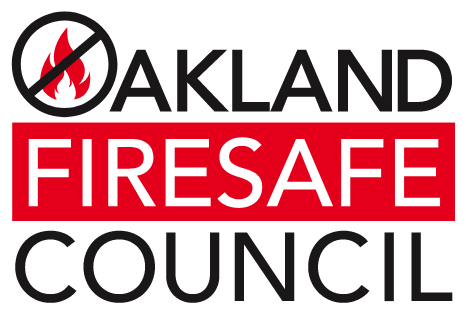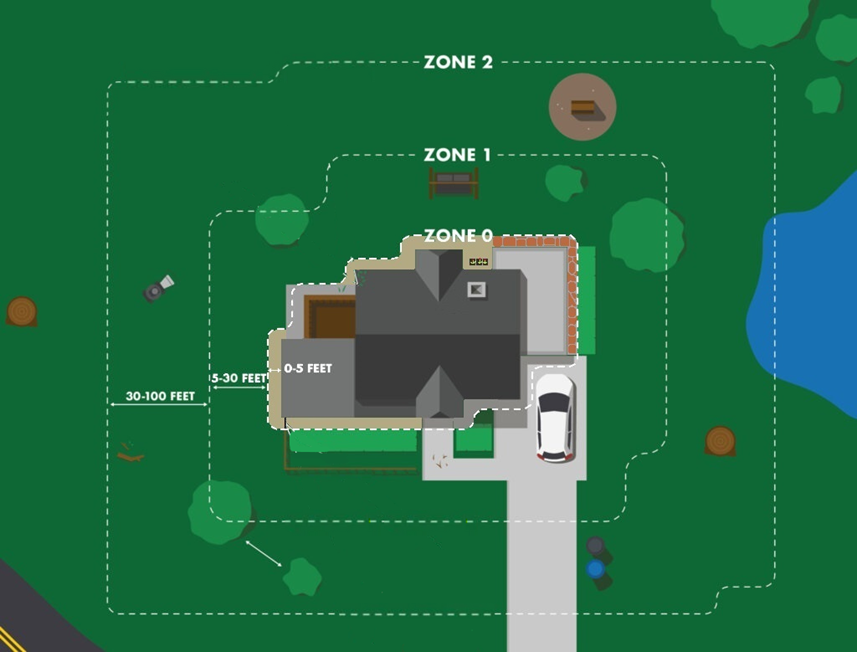By Michel Thouati, FireSafe-FireWise Alliance; Elizabeth Stage, Oakland Firesafe Council
At the October 23 hearing of the California Zone 0 Advisory Committee, the focus shifted from debate to definition. The meeting at McClellan Park in Sacramento was originally expected to follow the release of a final draft on October 10—a milestone mentioned at the previous session. Instead, the committee reconvened to review what was described as the October Plead, a near-final version still open to refinement. The tone was methodical and serious: commissioners aimed to close the loop on public input, finalize the text, and keep the rulemaking process grounded in safety and science.
Clarifying the Rules
Staff opened with a presentation on the updated draft, noting that more than 4,000 written comments had been received so far. The document now clearly defines the 0–5 foot ember-resistant zone, distinguishes between existing and new vegetation, and aligns the regulation with Public Resources Code § 4291.
The October Plead presented four vegetation options—ranging from the strictest (Option 1) to the status quo (Option 4)—and two tree options (Option 1 = strict; Option 2 = status quo).
Public Feedback: A Divided Room
The contrast between in-person and online participants was stark.
Inside the room, roughly fifteen attendees unanimously supported Option 1, the strictest version, citing science, drought, insurance eligibility, and the need for uniform statewide rules. Chief Arnold and others warned against “local control,” calling it a recipe for inconsistency and confusion. One speaker shared local data suggesting that strict Zone 0 standards would result in minimal tree loss.
Online, however, the tone was more contentious. About a hundred participants—mostly from Los Angeles County and nearby areas—advocated for Option 4, emphasizing local autonomy, shade, and aesthetics. Some claimed that “well-maintained vegetation protects homes.” The atmosphere grew tense at times, leading Chair O’Brien to intervene after one caller accused another of being an “insurance shill.”
Inside the Committee
Commissioners O’Brien, Goldsworthy, and Lopez were active throughout.
- O’Brien called the issues “complicated” and reminded participants that final rules must be reasonable and enforceable.
- Goldsworthy defended the link between fire safety and insurance access, pushing back against personal attacks and endorsing a ban on new combustible fence sections, which drew support in the room.
- Lopez refocused the discussion on safety, not aesthetics. He reiterated that “cutting trees is not part of the plan” and illustrated how trimming and clearance can preserve both trees and defensible space.
Staff emphasized that while public comments skew heavily toward leniency, regulations must be based on science and statutory authority—not popularity.
Where the Lines Are Drawn
Supporters—largely FireSafe and Firewise leaders and other wildfire-focused organizations—continued to advocate for Option 1, describing it as grounded in science and consistent with California’s drought conditions.
Opponents, many from Southern California and professional landscaping circles, argued for local flexibility, claiming that native or “healthy” vegetation can be protective.
Scientific experts and fire professionals, including representatives from IBHS, reaffirmed that Zone 0 standards are built on decades of empirical research.
Reading the Direction
Observers left with the impression that the committee is moving toward a clear outcome:
Option 1 is poised to become the **state baseline—the floor, not the ceiling—**allowing local jurisdictions to adopt stricter, but not weaker, standards. Commissioners tied the rule’s success to two measurable goals: insurance stability and homeowner safety. The tone of the meeting suggested growing confidence that the science is settled and the time for compromise is closing.
What’s Next
Further internal revisions will be made before the next meeting, scheduled for November 3 in Sacramento, where a final version will be reviewed.
Official rule adoption remains targeted for December 31, 2025, though some participants noted confusion over references to possible completion dates extending into early 2026.
Looking Ahead
Public opposition—largely concentrated in Los Angeles County—remains vocal but continues to lack scientific grounding. The commissioners, meanwhile, appear aligned around a pragmatic balance: strong, enforceable standards shaped by evidence and public safety.The Zone 0 Advisory Committee will reconvene November 3–4 in Sacramento to present what is expected to be the final version of the regulation, before transmitting it to the full Board of Forestry for adoption. How far the final draft will go—and how closely it hews to the scientific consensus—will soon be known.


